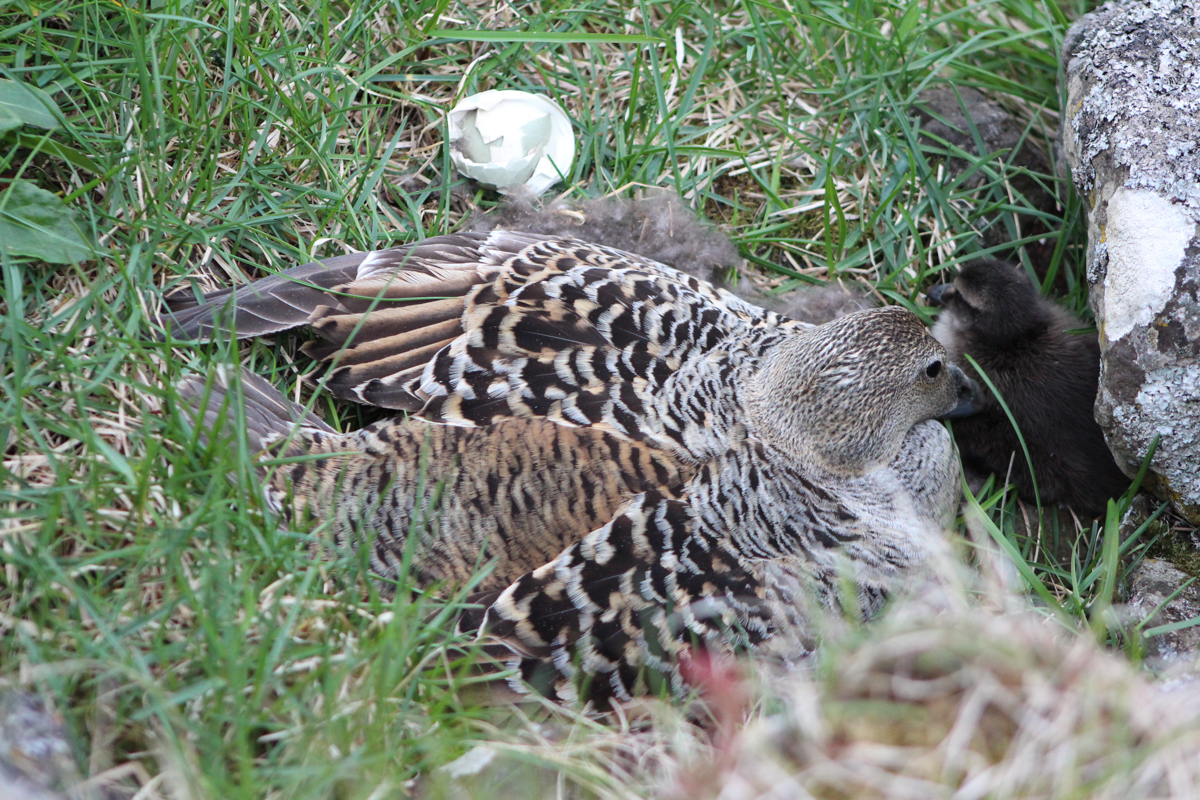Eider Duck
Somateria mollissima
The common eider is the largest duck in the Northern Hemisphere. A large body size is advantageous for birds like the common eider which rely on body reserves for incubation. The common eider sits on her eggs 99% of the time during the 25–26 days of incubation and only leaves to drink. However, the common eider eats before laying the eggs and whilst it is still laying eggs. One day passes between the laying of the eggs, and the development of the embryos halts until the female starts to incubate; therefore, all of the eggs hatch at the same time.
Most birds develop a brood patch prior to egg laying. Feathers and down are moulted from the belly and breast in order to form a brood patch, which transfers heat from the parent to the eggs. The development of a brood patch includes a swelling of the skin, which becomes filled with white blood cells and becomes 2–5 times thicker than ordinary skin. Most importantly, the skin of the brood patch fills with blood vessels, which increase the heat flow from the parent to the eggs. Therefore, a kind of a hot plate is formed on female’s breast and belly.
The Conservation of Arctic Flora and Fauna (CAFF) program of the Arctic Council has outlined an international conservation strategy to conserve eiders. Individual Arctic Nations have developed and are now implementing their national eider conservation action plans with a common goal of sustaining healthy population into the future.
Eider Duck
Somateria mollissima
The common eider is the largest duck in the Northern Hemisphere. A large body size is advantageous for birds like the common eider which rely on body reserves for incubation. The common eider sits on her eggs 99% of the time during the 25–26 days of incubation and only leaves to drink. However, the common eider eats before laying the eggs and whilst it is still laying eggs. One day passes between the laying of the eggs, and the development of the embryos halts until the female starts to incubate; therefore, all of the eggs hatch at the same time.
Most birds develop a brood patch prior to egg laying. Feathers and down are moulted from the belly and breast in order to form a brood patch, which transfers heat from the parent to the eggs. The development of a brood patch includes a swelling of the skin, which becomes filled with white blood cells and becomes 2–5 times thicker than ordinary skin. Most importantly, the skin of the brood patch fills with blood vessels, which increase the heat flow from the parent to the eggs. Therefore, a kind of a hot plate is formed on female’s breast and belly.
The Conservation of Arctic Flora and Fauna (CAFF) program of the Arctic Council has outlined an international conservation strategy to conserve eiders. Individual Arctic Nations have developed and are now implementing their national eider conservation action plans with a common goal of sustaining healthy population into the future.
See the exhibition in The Icelandic Eider Centre!





